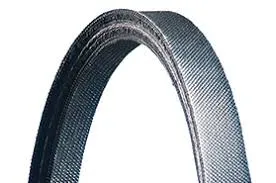- Arabic
- French
- Russian
- Spanish
- Portuguese
- Turkish
- Armenian
- English
- Albanian
- Amharic
- Azerbaijani
- Basque
- Belarusian
- Bengali
- Bosnian
- Bulgarian
- Catalan
- Cebuano
- Corsican
- Croatian
- Czech
- Danish
- Dutch
- Afrikaans
- Esperanto
- Estonian
- Finnish
- Frisian
- Galician
- Georgian
- German
- Greek
- Gujarati
- Haitian Creole
- hausa
- hawaiian
- Hebrew
- Hindi
- Miao
- Hungarian
- Icelandic
- igbo
- Indonesian
- irish
- Italian
- Japanese
- Javanese
- Kannada
- kazakh
- Khmer
- Rwandese
- Korean
- Kurdish
- Kyrgyz
- Lao
- Latin
- Latvian
- Lithuanian
- Luxembourgish
- Macedonian
- Malgashi
- Malay
- Malayalam
- Maltese
- Maori
- Marathi
- Mongolian
- Myanmar
- Nepali
- Norwegian
- Norwegian
- Occitan
- Pashto
- Persian
- Polish
- Punjabi
- Romanian
- Samoan
- Scottish Gaelic
- Serbian
- Sesotho
- Shona
- Sindhi
- Sinhala
- Slovak
- Slovenian
- Somali
- Sundanese
- Swahili
- Swedish
- Tagalog
- Tajik
- Tamil
- Tatar
- Telugu
- Thai
- Turkmen
- Ukrainian
- Urdu
- Uighur
- Uzbek
- Vietnamese
- Welsh
- Bantu
- Yiddish
- Yoruba
- Zulu
Oct . 14, 2024 15:42 Back to list
timing belt industry
The Timing Belt Industry An Overview
The timing belt industry plays a crucial role in the automotive and machinery sectors, providing an essential component that ensures the efficient functioning of engines and various mechanical systems. Timing belts are designed to synchronize the rotation of the crankshaft and camshaft, allowing for precise timing of the valve openings and closings. This synchronization is vital for optimal engine performance, fuel efficiency, and overall vehicle reliability.
The global timing belt market has experienced significant growth in recent years, driven by the increasing demand for automobiles, advancements in manufacturing technologies, and a focus on improving vehicle performance and reducing emissions. As the automotive industry continues to evolve, several trends and factors shape the timing belt landscape.
One major trend is the shift toward electric and hybrid vehicles. While traditional internal combustion engines predominantly utilize timing belts, the rise of electric vehicles (EVs) presents both challenges and opportunities for the industry. EVs typically do not require timing belts as they utilize electric motors, which operate differently. However, the growth of hybrid vehicles, which still rely on internal combustion engines, maintains the demand for timing belts. This duality calls for manufacturers to adapt their product offerings to cater to diverse vehicle types while staying technologically relevant.
timing belt industry

Additionally, advancements in materials and manufacturing processes are reshaping the timing belt industry. Traditionally made from rubber, modern timing belts are now often produced using high-performance materials such as polyurethane and reinforced fibers. These innovations lead to belts that offer increased durability, reduced stretch, and improved thermal resistance. As a result, manufacturers can produce belts that not only last longer but also operate more efficiently, contributing to overall vehicle performance and longevity.
The aftermarket segment is another vital aspect of the timing belt industry. As vehicles age and require maintenance, timing belt replacements become a necessity. This segment presents significant opportunities for manufacturers and suppliers, as many car owners may opt for aftermarket solutions to save on costs. Consequently, the aftermarket for timing belts has seen increased competition, prompting manufacturers to focus on quality, pricing, and customer service.
Moreover, the timing belt industry is experiencing a push towards sustainability. As consumers become more environmentally conscious, manufacturers are compelled to consider the environmental impact of their products. This includes utilizing eco-friendly materials, reducing waste during production, and ensuring that products are designed for longevity to reduce the need for frequent replacements. Companies that prioritize sustainability not only meet consumer demand but also enhance their brand reputation in a competitive marketplace.
In conclusion, the timing belt industry is at a crossroads of innovation, adaptation, and growth. With the ongoing transformation of the automotive landscape, advancements in materials technology, and a focus on sustainability, this industry is poised for a promising future. As manufacturers, suppliers, and consumers navigate these changes, the timing belt will continue to be a cornerstone of engine performance and reliability, ensuring the smooth operation of vehicles and machinery for years to come. The evolution of this industry reflects the broader trends shaping the future of transportation and mechanical engineering.
-
Variable Belt Drive AI Optimized for Efficiency
NewsAug.05,2025
-
High-Quality Tensioner Belt Pulley - Durable & Efficient
NewsAug.03,2025
-
Premium Timing Belt Factory | AI-Optimized Solutions
NewsAug.02,2025
-
Heat Joining Drive Belt | High-Durability Fusion Solution
NewsJul.31,2025
-
Timing Belt Video Guide: Selection, Design & Quality Insights
NewsJul.30,2025
-
High-Performance Variable Speed V Belt Drive for Efficient Power Transmission
NewsJul.30,2025

